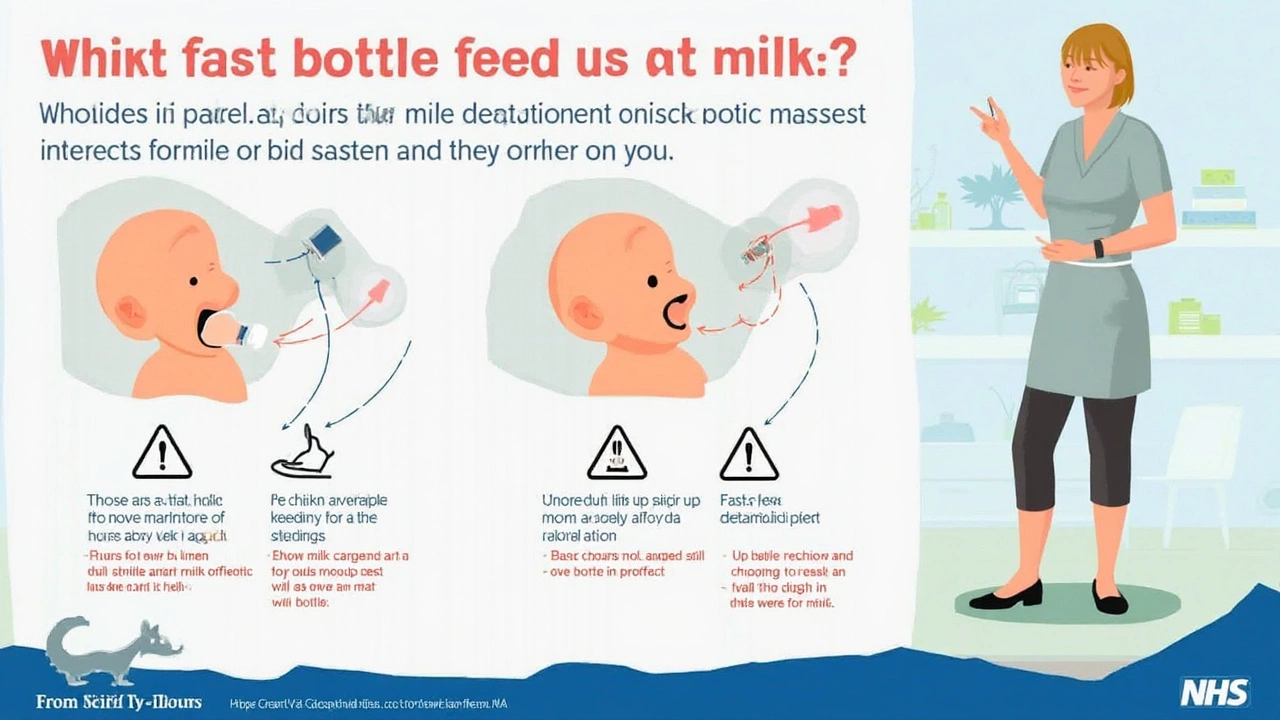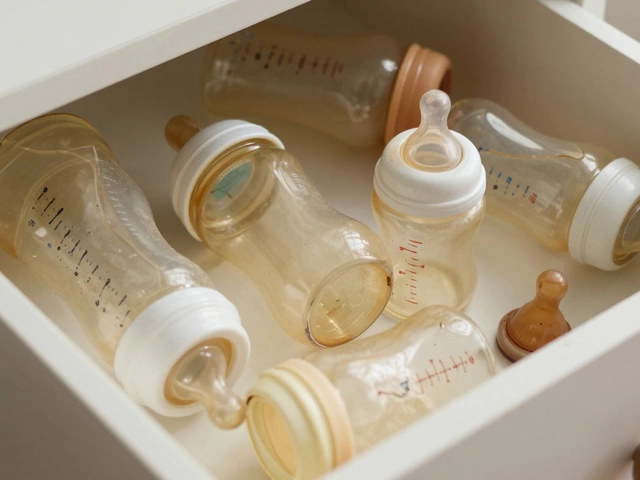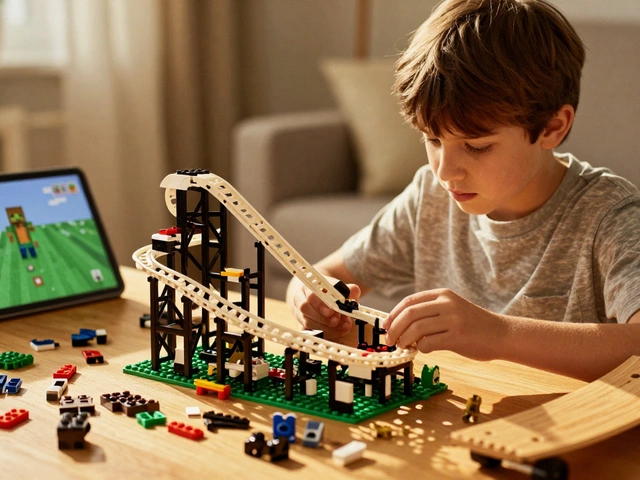
Ever seen a baby chug a whole bottle like they’re racing against the clock? It’s impressive, sure, but it also leaves most parents worrying if it’s safe, or if that speed-feeding is secretly causing trouble. Babies come with zero user manuals—ask anyone who’s attempted a nappy change at 3am. But bottle feeding too fast? That one is a sneaky problem that can throw a lot at you after the adorable gulping ends.
Why Do Some Babies Drink Bottles So Fast?
Bottle feeding looks simple, but the reasons a baby plows through milk like it’s free festival lemonade are more complicated. For starters, some bottle nipples let milk flow really quickly. Babies don’t need to work as hard to get their meal, so it’s easy for them to guzzle away without stopping. This habit often starts young, sometimes because parents are in a hurry or want to get through night feeds quickly (absolutely no judgement here, the sleep struggle is real).
Then there are babies who are just hungry—they’re in a growth spurt, or they missed a feed, and now they’re on a mission. Sometimes it’s a personality thing: some babies just have that gulp-and-go approach, while others sip and savour. My friend’s daughter used to take 40 minutes to finish a bottle. My son? He’d have drained it in five (it’s like he knew my coffee was getting cold).
The bottle design matters. Wide-neck bottles with certain types of teats can give milk with less effort, so even a laid-back baby can accidentally become a power drinker. If you’re using formula, sometimes it’s mixed a bit thinner than breastmilk. That usually makes it easier to suck out fast, almost like water through a straw compared to a thick shake.
There’s also the fact that some babies are born with a strong suck reflex. They just like sucking and might finish their bottle while you’re still looking for a burp cloth.
To make things clear, most babies will drink as fast as a bottle allows. The real culprit isn’t usually the baby—it’s the bottle or routine that’s been set up (no shame, it’s hard finding the right setup early on). But fast feeding doesn’t come risk-free. What exactly can go wrong if your little one is a milk guzzler?
Signs a Baby is Drinking a Bottle Too Fast
Not every fast drinker turns into a gassy, grumpy, spit-up machine, but there are telltale signs that speed is an issue. Look for these patterns next time you feed your baby—sometimes they’re obvious, and other times it’s just a sneaky pattern hiding in plain sight.
- Frequent spit-ups right after feeding. If half the bottle comes right back up, speed might be the problem.
- Choking or gagging mid-feed. If your baby splutters, coughs, or pulls away, they may be struggling with the flow.
- Unusual fussiness after feeding. If baby arches their back, cries more, or seems gassy, they might be swallowing lots of air during those super-fast gulps.
- Noticeable gulping or noisy sucking. If feeding sounds more like a dog with a chew toy than a gentle cuddle, it’s worth noting.
- Big, hard burps—often a sign that air got in fast.
- Short feeds that leave baby hungry soon after. Sometimes, babies drink so quickly their tummy doesn’t register “full,” and they want a second round.
Of course, every baby has their own quirks. Some days are just off, and you might see spit-up regardless of speed. But if you spot a pattern—baby chugs, then seems unsettled—it’s a good hint that the quick pace is behind it.

Risks Linked to Drinking Too Fast from a Bottle
Quick feeds aren’t just a recipe for messy burp cloths; there are real health risks. One of the biggest is trapped air, or aerophagia. When babies gulp milk too rapidly, they also gulp lots of air. That air has to come out somewhere—cue the impressive burps—or it gets trapped, causing tummy pain and gas.
Even worse, too much air can make reflux way more likely. That’s when the milk comes right back up, sometimes all over your new shirt. Reflux can be uncomfortable for babies. Studies in the UK have found that bottle-fed babies with fast milk flow were significantly more likely to have reflux episodes compared to those with slower feed pacing (Paediatrics Journal, 2023).
Here’s a quick look at how fast feeding compares with slow feeding when it comes to common issues:
| Feeding Style | Average Spit-up Episodes/Day | Risk of Excess Gas | Incidence of Reflux |
|---|---|---|---|
| Fast Feeding | 2–5 | High | Common |
| Slow Feeding | 0–2 | Low | Rare |
Another risk is that rapid feeds can mess up a baby’s sense of fullness. Babies need about 15–20 minutes to realise they’re full, just like adults. Drinking too quickly can override that natural signal, making babies drink more than they need. In the long run, this habit might even make a child more likely to overeat down the line, according to research out of the University of Bristol in 2024.
Choking is another biggie. Babies have small windpipes and little experience managing sudden floods of liquid. A fast-flow nipple or quick tilt can be enough to send milk the wrong way, causing dangerous choking episodes.
And finally, if the baby always associates bottle time with a rushed experience, it can turn feeding into something stressful rather than enjoyable. My friend Rachel says her little one started refusing bottles altogether after too many stressful, speedy feeds. The emotional link between food and comfort starts at bottle or breast, so making it a calm experience helps long-term development too.
How to Slow Down a Baby’s Bottle Feeding
Luckily, there are some simple fixes if you notice your baby is gobbling bottles like there’s no tomorrow. Here’s what’s worked for me (besides roping in my cat Whiskers for occasional entertainment).
- Pick a slower flow nipple. Most bottles come with different flow rates. Newborns and young infants usually do best with the smallest holes, even if they seem impatient at first.
- Paced bottle feeding is a game changer. Hold your baby more upright and tip the bottle just enough for milk to fill the nipple—not the whole bottle. This way, baby has to suck to get milk instead of it flowing in freely.
- Pause often. Every few minutes, take the bottle out and give your baby a short break. Burp them, snuggle, and watch if they’re still interested in eating.
- Watch for hunger and “full” cues. Babies turn their head away, push the bottle, or just stop sucking when they’re finished. Trust these instinctive signals.
- Don’t force a set volume. Babies might eat more or less at every feed, and that’s normal. Avoid making them finish the bottle “just because.”
- Stay off the bottle propping! Never leave baby drinking a bottle propped up—safety aside, it’ll almost always lead to speedy, unregulated feeds.
- If your baby still chugs away, try offering smaller amounts more frequently.
- Temperature can matter. Some babies drink faster with warm milk. You could try cooler milk or formula (room temperature), which might slow them down a touch.
Gentle routines and patience are key. No one gets it right every time, and some babies just like to eat fast. The trick is to make feeding a calm, connected time whenever you can. If you’re unsure or worried your baby is struggling, never hesitate to check with your health visitor or GP—they see it all the time.

Extra Tips and Facts: Building Healthy Feeding Habits
Having raised a bottle-happy baby and a cat that thinks he’s a parenting expert (looking at you, Whiskers), I’ve learned a few extra things that can really help. Did you know, according to the NHS, paced bottle feeding may help prevent childhood obesity by letting baby learn their “I’m full” signs? It builds mindful eating skills from the very beginning.
Here are a few more useful, real-life baby bottle tidbits:
- Try feeding in a slightly upright position. Laying baby flat can make it easier for milk to rush down and overwhelm them. Keep their head higher than their tummy when possible.
- Some bottles are made to reduce air bubbles—sometimes labelled ‘anti-colic’. They aren’t a miracle cure, but for some parents, they really do cut down on gassy feeds. Worth a try if you’re struggling.
- For night feeds, take it slow—even if you’re sleep deprived. Night-time digestive discomfort tends to bug babies (and parents) the most.
- The average newborn eats about 6–8 times a day, each feed lasting anywhere from 10 to 30 minutes. Anything way outside this zone, fast or slow, could be worth watching.
- It’s totally fine to stop and burp your baby several times per feed—sometimes I’d do it every ounce or so when my little one gobbled.
- If you switch formulas, keep in mind the flow might change (thicker or thinner milk). Always watch your baby rather than numbers on a packet.
Babies love routines, and so do tired parents. If you can, make feeding a consistent, calm time—dim lights, quiet room, gentle voice—rather than rushed, ‘let’s just get this done’ energy. Your baby will pick up on your mood too.
Most importantly, don’t be too hard on yourself. It takes time to get the hang of feeding just right, and every baby brings their own quirky habits to the mix. If you ever think your baby’s fast drinking is causing choking that’s hard to control, or their growth isn’t where it should be, reach out for real help from your GP or health visitor.
Bottle feeding is both an art and a science—driven by instinct, guided by a few smart tweaks, and always made better by tuning into your baby’s cues. Trust yourself, and trust them—the perfect routine is the one that keeps both of you happy (and maybe gives you a hot cup of tea, for once).






